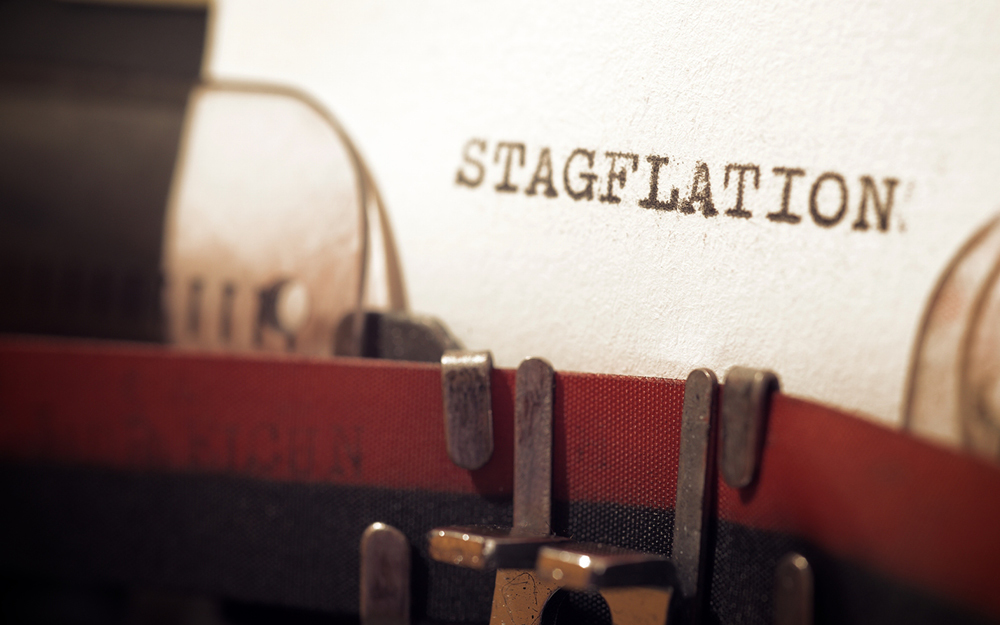Insights
August 2022

Content
- Tech tips to get more hours in your day
- Coming to terms with stagflation
- How to manage rising interest rates
It’s August and as winter draws to a close there’s snow in the Alps and the wattle is blooming. Many Australians will soon receive a sizeable tax refund, if they haven’t already, which should help ease those rising cost-of-living blues.
Rising inflation and interest rates were the focus of attention in July. The US Federal Reserve lifted its target rate by 75 basis points to 2.25-2.50% to tackle surging inflation of 9.1%. At the same time, the US economy contracted by 0.9% in the June quarter, following a 1.6% drop in the March quarter.
By contrast, Australia is performing relatively well. In his first economic statement, treasurer Jim Chalmers downgraded growth forecasts to a still solid 3.75% last financial year and 3% this financial year. Inflation jumped to 6.1% in the year to June and is forecast to peak above 7% in December. And the Reserve Bank lifted the cash rate by 50 basis points to 1.35% in July, with a similar increase tipped this month and more to come. Governor Philip Lowe said he expects rates to get to ‘at least’ 2.5%. Unemployment fell to 3.5% in June, but rising prices and interest rates dented confidence. The ANZ-Roy Morgan consumer confidence index sits at 82.4 points – below 100 is pessimistic. While the NAB business confidence index fell 5 points to +1.4 points in June.
The biggest hit to inflation has come from housing and construction prices and petrol. But the housing market is cooling due to rising interest rates, with national home values easing 0.6% in June and new dwelling starts down 6.5% in the March quarter. Petrol prices are also easing, down 19c to below $1.93 a litre in late July on falling global oil prices. The Aussie dollar gained a cent to finish the month around US70c.

Life just seems to get ever busier as the years roll by and our most precious commodity is often our time. We could all do with a few more hours in the day and technology continues to play a vital role in bringing efficiencies into our daily lives.
In fact, research indicates that technology saves the average person around two weeks a year – or almost two and a half years of our lifetimes.i The main time savers are the things most of us are generally already using – self-service checkouts, online banking and shopping, and mobile traffic updates. It’s certainly worth ensuring you are making the most of these time savers and spending the least amount of time on mundane tasks by setting up online shopping lists and automating bill paying.
Then to take your time saving efforts even further, there are a myriad of applications that have sprung up to help you create efficiencies in your professional and personal life. Let’s look at the best ways to stop wasting your precious time and then look at specific applications that may be of benefit.
Taming the email beast
Email is certainly nothing new. Once prized as a valuable communication tool, email is now singled out as a black hole for lost time. What is relatively new is the number of email management applications you can turn to for help. Such applications are indispensable if you use multiple inboxes, or if you have so many unread emails that you can’t organise them on your own. A good example is Clean Email which deletes thousands of old emails and organises new incoming messages automatically. It’s also becoming more common to only check and respond to email a few times a day rather than on a continual basis as it can be a constant distraction.
Avoid distractions and stay focussed
When it comes to distractions it can be hard to stay on target 100 per cent of the time, however if you find that you are spending too much time on online diversions, apps like Freedom and the aptly named Selfcontrol block irrelevant content.
There is also a growing trend away from multi-tasking that suggests it’s more effective to focus on one thing at a time, giving each task your undivided attention before moving on to the next. If that’s an approach that you find challenging, there are a number of apps that have sprung up to help you keep focussed. If you find you jump from one thing to another and end up with a stack of half-finished tasks, apps like Focuskeeper provide discipline and the motivation to complete tasks.
Save time by being aware of time
One way of saving time is to become more aware of where your time is being spent so you can reduce wasted time. While it can be a little disturbing to find out how much time you spend checking your social feeds, apps like RescueTime are great for keeping you on target. RescueTime tracks what you’re working on and suggests the best times for uninterrupted work and when you’re losing focus and trying to tackle too many tasks the prompts help you to prioritise.
Get organised and outsource
Making the most of your time is all about getting organised. Apps that help you to break down your hectic life into tasks and ‘to-do’ lists also help you to prioritise and make sure nothing gets dropped. Remember the milk allows users to manage tasks, share lists and allocate them to others so it’s a useful tool to keep your whole household or team at work organised.
It’s important to put a value on your precious time and sometimes that means getting a hand with all the low-value tasks in your life that get in the way of what you really need to do. There are heaps of apps like Fivver or Airtasker that can help you to outsource all sorts of annoying, time-consuming jobs.
Is it time to start exploring how technology can help you to be more efficient and reclaim some of those lost hours? The challenge will then be deciding what to do with all that extra time on your hands!

Coming to terms with stagflation
First, we had to brush up our understanding of inflation and what it means for our hip pocket and our investments. Now the term stagflation is being thrown into the economic mix.
For those with long memories, stagflation is a reminder of the late 1970s and early 1980s when the world economy fell into what then-Treasurer Paul Keating called “the recession we had to have”.
The word has raised its head again with the World Bank warning that there is a rising risk of stagflation.i This took the wind out of the sails of global sharemarkets, with Australian shares down 10 per cent in the year to June, although they have since started to show signs of recovery.ii
Despite the term stagflation re-entering conversation, the general belief is that things will not get as bad as last century but they are still likely to be challenging.
So, what is stagflation? Basically, it’s the combination of rising inflation, high unemployment, and weak economic growth. When all three happen at the same time, then the economy and living standards struggle. So let’s look at each of these three markers in turn.
Rising inflation
The definition of inflation is a general increase in prices and a fall in the purchasing value of money.
Certainly, we are experiencing rising inflation right now. It’s currently running at just over 6 per cent in Australia. The war in Ukraine took its toll on commodity prices globally which is contributing to the hike. While prices are off their highs, they are still hurting.
On the local front, floods on the east coast of Australia have damaged crops which will also push inflation higher.
Reserve Bank governor Philip Lowe has pointed to a top inflation rate of about 7 per cent in this current economic cycle which is well above the 2-3 per cent inflation target the Reserve Bank uses in setting monetary policy.
Slowdown in economic growth
Looking next at economic growth, and this is certainly slowing.
The OECD cut its outlook for global economic growth from 4.5 per cent in 2021 to 3 per cent this year and 2.8 per cent in 2023. In Australia, growth is expected to fall from 4.8 per cent to 3.5 per cent this year and 2.1 per cent in 2023.iii
The definition of economic growth refers to the size of a country’s economy over time. It’s measured in real and nominal terms. Nominal refers to the increase in the dollar value of production over time; real economic growth just looks at the volume produced. Real growth is the figure generally used.iv
Low unemployment
Unemployment, meanwhile, is at the lowest levels in Australia since 1974 at 3.9 per cent.v But despite the low unemployment rate, wage growth is less than half that of inflation, so it is hard to keep pace with the rising prices.
Looking at the three criteria for stagflation, unemployment in Australia is less than 4 per cent, inflation is running at just over 6 per cent and GDP growth is 3.3 per cent. At these levels it seems more likely, but far from certain, that we will experience a recession rather than stagflation. Recession is defined as two consecutive quarters of negative growth.
Stagflation would be a bigger problem than a severe recession because the traditional ways to deal with it are either increased government spending or cutting interest rates. Unfortunately, these solutions are both inflationary and therefore not good tools for the current economic environment.
Big mortgages put brake on rate rises
Back in the 1970s and 1980s, interest rates hit 18 per cent as the Reserve Bank struggled to contain inflation. With mortgages at their current size, increased rates will start hurting much sooner so this will put a brake on inflation well before rates reach double digit levels.
The general view is that mortgage rates will peak at just over the 5 per cent mark.vi
Concern about the possibility of stagflation has fuelled the recent sharemarket volatility and uncertainty, although it seems unlikely on current evidence. As the future is impossible to predict, it is better to sit tight and wait for the market to recover rather than sell as a kneejerk reaction and realise losses.
If you would like to discuss your overall financial position in these uncertain times, then call us.
i https://www.washingtonpost.com/business/2022/06/07/world-bank-global-growth-forecast-stagflation/
ii https://tradingeconomics.com/australia/stock-market
iii https://www.oecd.org/newsroom/oecd-economic-outlook-reveals-heavy-global-price-of-russia-s-war-against-ukraine.htm
iv https://www.rba.gov.au/education/resources/explainers/economic-growth.html
v https://www.abs.gov.au/media-centre/media-releases/unemployment-rate
vi https://www.ratecity.com.au/home-loans/mortgage-news/high-will-rates-go-here-experts-think-rba-cash-rate

How to manage rising interest rates
Rising interest rates are almost always portrayed as bad news, by the media and by politicians of all persuasions. But a rise in rates cuts both ways.
Higher interest rates are a worry for people with home loans and borrowers generally. But they are good news for older Australians who depend on income from bank deposits and young people trying to save for a deposit on their first home.
Rising interest rates are also a sign of a growing economy, which creates jobs and provides the income people need to pay the mortgage and other bills. By lifting interest rates, the Reserve Bank hopes to keep a lid on inflation and rising prices. Yes, it’s complicated.
How high will rates go?
In early May, the Reserve Bank lifted the official cash rate for the first time since November 2010, from its historic low of 0.1 per cent. The reason the cash rate is watched so closely is that it flows through to mortgages and other lending rates in the economy.
To tackle the rising cost of living, the Reserve Bank expects to lift the cash rate further, to around 2.5 per cent.i Inflation is currently running at 5.1 per cent, which means annual wages growth of 2.4 per cent is not keeping pace with rising prices.ii
So what does this mean for household budgets?
Mortgage rates on the rise
The people most affected by rising rates are likely those who recently bought their first home. In a double whammy, after several years of booming house prices the size of the average mortgage has also increased.
According to CoreLogic, even though price growth is slowing, the median home value rose 16.7 per cent nationally in the year to April to $748,635. Prices are higher in Sydney, Canberra and Melbourne.
CoreLogic estimates a 1 per cent rise would add $486 a month to repayments on the median new home loan in Sydney, and an additional $1,006 a month for a 2 per cent rise.
While the big four banks are not obliged to pass on the cash rate changes, in May they passed on the Reserve Bank’s 0.25 per cent increase in the cash rate in full to their standard variable mortgage rates which range from 4.6 to 4.8 per cent. The lowest standard variable rates from smaller lenders are below 2 per cent.
Still, it’s believed most homeowners should be able to absorb a 2 per cent rise in their repayments.iii
The financial regulator, APRA now insists all lenders apply three percentage points on top of their headline borrowing rate, as a stress test on the amount you can borrow (up from 2.5 per cent prior to October 2021).iv
Rate rise action plan
Whatever your circumstances, the shift from a low interest rate, low inflation economic environment to rising rates and inflation is a signal that it’s time to revisit some of your financial assumptions.
The first thing you need to do is update your budget to factor in higher loan repayments and the rising cost of essential items such as food, fuel, power, childcare, health and insurances. You could then look for easy cuts from your non-essential spending on things like regular takeaways, eating out and streaming services.
If you have a home loan, then potentially the biggest saving involves absolutely no sacrifice to your lifestyle. Simply pick up the phone and ask your lender to give you a better deal. Banks all offer lower rates to new customers than they do to existing customers, but you can often negotiate a lower rate simply by asking.
If your bank won’t budge, then consider switching lenders. Just the mention of switching can often land you a better rate with your existing lender.
The challenge for savers
Older Australians and young savers face a tougher task. Bank savings rates are generally non-negotiable, but it does pay to shop around.
The silver lining is that many people will also see increased interest rates on their savings accounts as the cash rate increases. By mid-May only three of the big four banks had increased rates for savings accounts. Several lenders also announced increased rates for term deposits of up to 0.6 per cent.v
High interest rates traditionally put a dampener on returns from shares and property, so commentators are warning investors to prepare for lower returns from these investments and superannuation.
That makes it more important than ever to ensure you are getting the best return on your savings and not paying more than necessary on your loans. If you would like to discuss a budgeting and savings plan, give us a call.
i https://www.rba.gov.au/speeches/2022/sp-gov-2022-05-03-q-and-a-transcript.html
ii https://www.abs.gov.au/
iii https://www.canstar.com.au/home-loans/banks-respond-cash-rate-increase/
iv https://www.apra.gov.au/news-and-publications/apra-increases-banks
v https://www.ratecity.com.au/term-deposits/news/banks-increased-term-deposit-interest-rates
